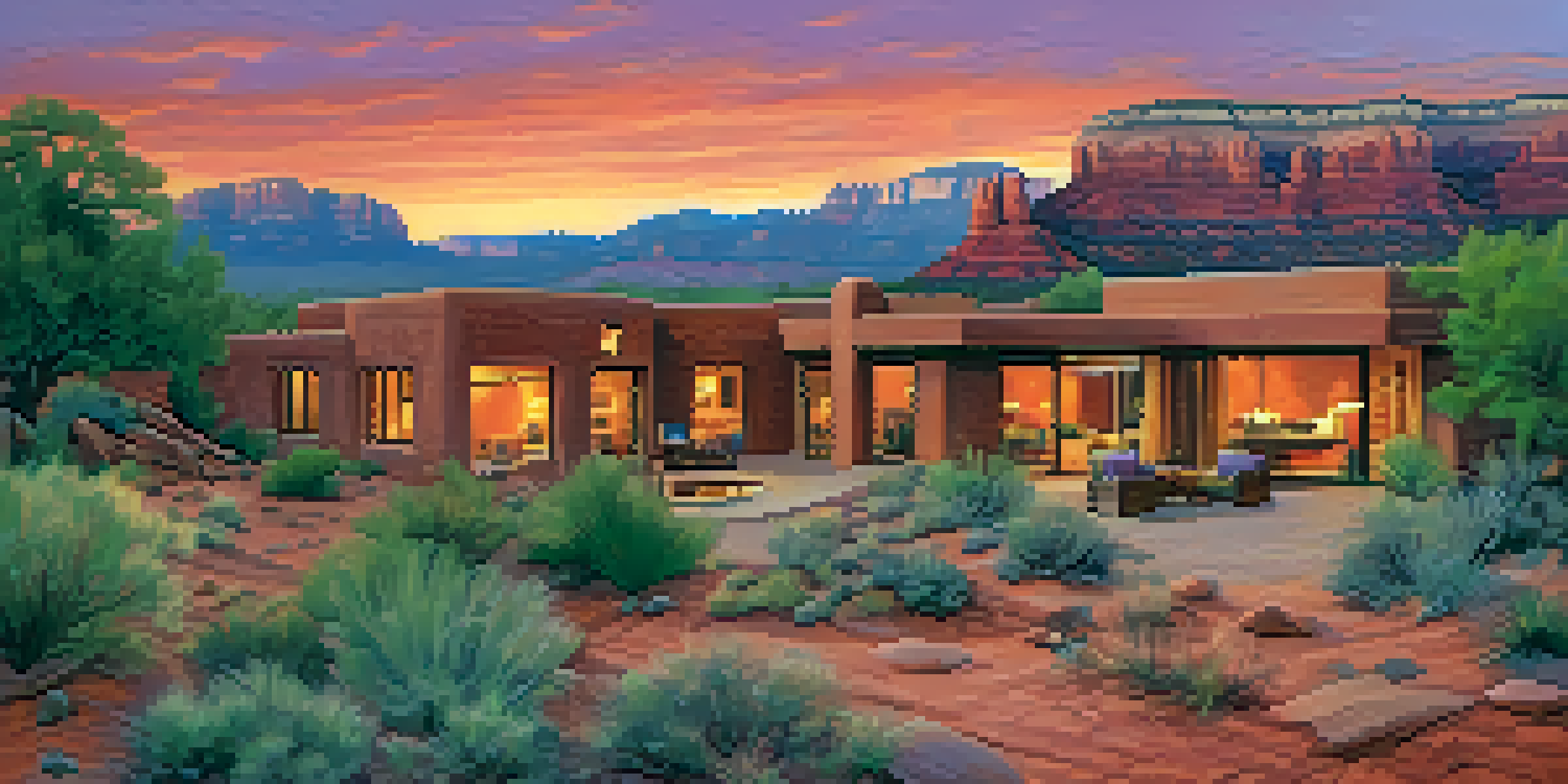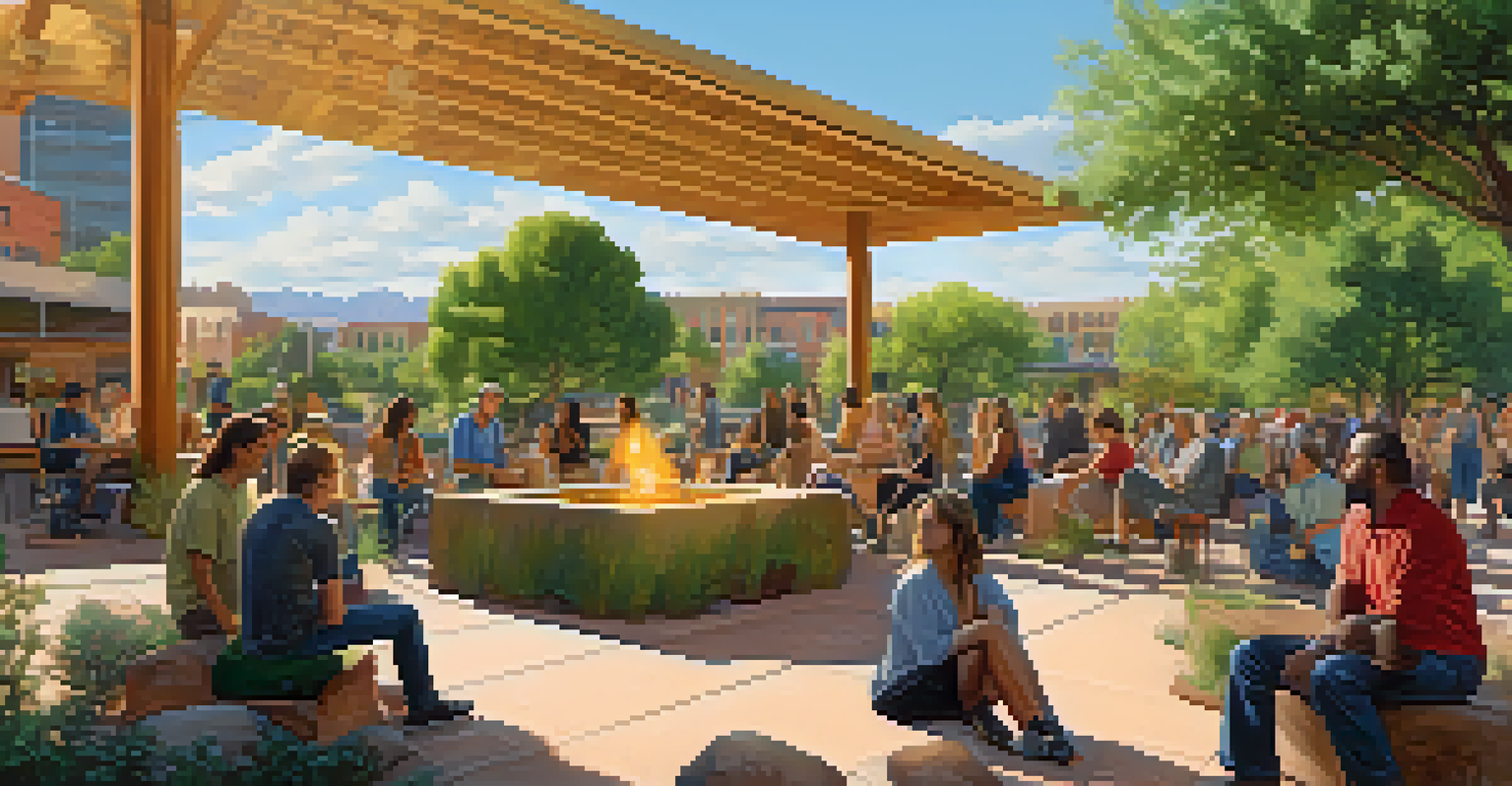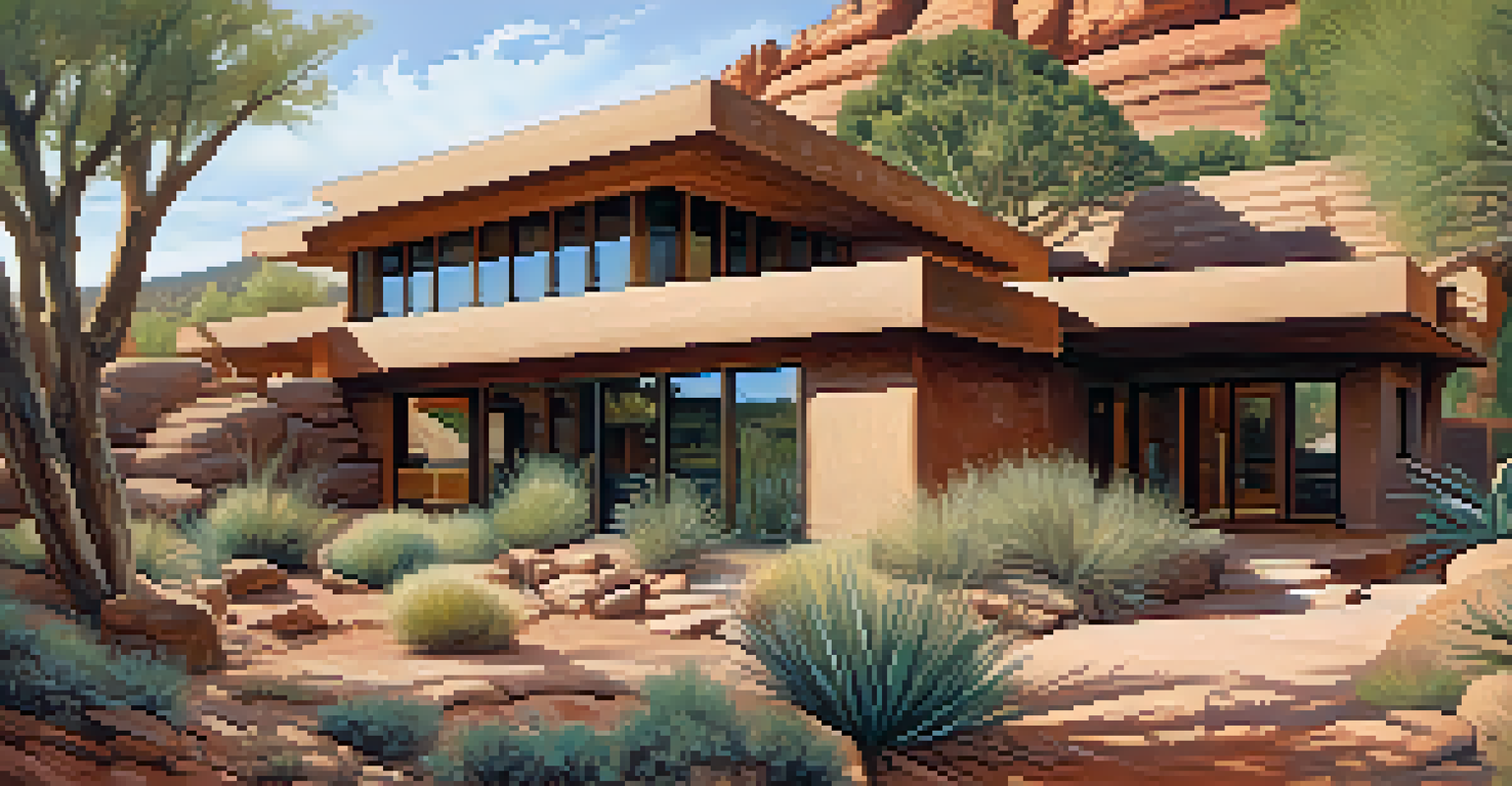Sedona's Architectural Harmony with Nature

The Allure of Sedona's Natural Landscape
Sedona is renowned for its breathtaking red rock formations and stunning vistas that draw in visitors from all over the world. This captivating landscape serves not only as a backdrop but also as a muse for the architectural designs found throughout the area. Many buildings and homes are intentionally positioned to complement the natural beauty, creating a seamless blend between man-made structures and the surrounding environment.
Architecture should speak of its time and place, but yearn for timelessness.
The vibrant hues of the rocks, especially at sunrise and sunset, inspire local architects to incorporate colors and materials that reflect these natural tones. This connection to nature fosters a sense of tranquility and harmony, making Sedona more than just a picturesque location; it becomes a living canvas that highlights the artistry of both nature and human creativity.
Furthermore, the preservation of this stunning landscape is a priority for both residents and architects alike. By prioritizing eco-friendly designs and sustainable materials, Sedona's architecture not only respects the environment but enhances the overall aesthetic experience for both locals and visitors.
Architectural Styles Inspired by the Surroundings
Sedona showcases a diverse range of architectural styles that are deeply inspired by its unique geographical features. From adobe homes that echo the Southwest's Native American heritage to modern designs that emphasize large windows and clean lines, each structure tells a story of its environment. These styles are not just visually appealing; they also serve practical purposes, such as maximizing natural light and views of the iconic red rocks.

For instance, many homes are built with earthy materials like stone and wood, which not only blend in with the natural landscape but also provide energy efficiency. The use of these materials is a conscious choice to maintain a low environmental impact while ensuring that homes remain comfortable year-round. This thoughtful approach to design showcases a deep respect for the land and its resources.
Sedona's Architecture Embraces Nature
The architectural designs in Sedona prioritize harmony with the stunning natural landscape, using colors and materials that reflect the surrounding environment.
Moreover, public buildings, such as the Sedona Library and local art galleries, also reflect this architectural ethos. Their designs often incorporate elements like green roofs and outdoor spaces, further blurring the boundaries between indoor and outdoor environments, inviting community engagement and appreciation of the natural surroundings.
Sustainability in Sedona's Architecture
Sustainability is a key principle guiding architectural practices in Sedona. The region's commitment to eco-friendly building techniques is evident in many new developments that prioritize energy efficiency and use of renewable resources. For example, many homes feature solar panels, rainwater harvesting systems, and energy-efficient appliances that minimize their carbon footprint while enhancing comfort.
The best way to predict the future is to design it.
In addition, local architects often incorporate passive solar design principles, which maximize the use of sunlight for heating and natural cooling. By orienting buildings to capture the sun's rays during winter months and providing adequate shading during the summer, these designs not only reduce energy costs but also create a more sustainable living environment.
The community's dedication to preserving the natural beauty of Sedona aligns with these sustainable practices. Residents and builders alike are increasingly aware of the importance of protecting the area's unique ecosystem, and this collective effort is reflected in the architecture that prioritizes harmony with nature.
Community Engagement in Architectural Decisions
In Sedona, community engagement plays a vital role in shaping the architectural landscape. Residents are actively involved in discussions about new developments and renovations, ensuring that any changes respect the character of the area and its natural beauty. This collaborative approach fosters a sense of ownership and pride among locals, creating a community that values both tradition and innovation.
Public meetings and forums provide a platform for residents to express their opinions on proposed projects, allowing for a diverse range of voices to be heard. This not only strengthens community bonds but also results in architectural decisions that reflect the values and desires of those who call Sedona home. It’s a refreshing reminder that good design is about more than aesthetics; it’s about creating spaces that resonate with the people who inhabit them.
Sustainability Guides Design Choices
Sustainable practices, such as energy efficiency and eco-friendly materials, are central to Sedona's architectural ethos, ensuring minimal environmental impact.
Additionally, local artists and craftspeople are often invited to contribute to public art installations and design elements, further enriching the architectural landscape. This emphasis on community collaboration not only enhances the aesthetic appeal of structures but also fosters a deep connection between residents and their environment.
Cultural Influences on Sedona's Architecture
The cultural influences in Sedona are as diverse as its stunning landscapes, and they significantly shape its architectural identity. The area's rich history, influenced by Native American traditions, Spanish colonization, and modern artistic movements, is reflected in the design choices seen throughout the town. Buildings often incorporate symbols and motifs that honor local heritage, creating a unique narrative that ties the architecture to its cultural roots.
For example, many homes and public spaces feature elements inspired by Native American designs, such as kivas or adobe-style structures, highlighting the area’s deep connections to its indigenous communities. This acknowledgment of history not only enriches the architectural landscape but also fosters a sense of respect and appreciation for the traditions that have shaped Sedona over the centuries.
Moreover, artists drawn to Sedona's vibrant environment often leave their mark on the architecture, infusing buildings with creativity and artistic flair. This blend of cultural influences creates a distinctive architectural style that is both welcoming and reflective of the community’s values.
Innovative Designs That Blend in with Nature
Innovation is at the forefront of Sedona's architectural scene, with many designs pushing the boundaries of traditional building concepts. Architects are increasingly focusing on creating structures that not only stand out but also blend seamlessly into the natural environment. This approach often involves using organic shapes and natural materials that mimic the forms and colors found in the surrounding landscape.
For instance, some homes are designed with curved walls and green roofs that resemble the rolling hills and rocky outcrops of Sedona. These innovative designs not only enhance the visual appeal but also promote environmental sustainability by integrating with the ecosystem. Such creativity showcases a forward-thinking mindset, proving that architecture can be both functional and aesthetically pleasing.
Community Shapes Architectural Vision
Active community engagement in architectural decisions fosters a sense of ownership and ensures that developments align with local values and aesthetics.
Additionally, technology plays a significant role in these innovative designs, with architects utilizing advanced tools and materials to create energy-efficient and durable structures. This fusion of creativity, technology, and respect for nature ensures that Sedona remains a beacon of architectural harmony.
The Future of Sedona's Architectural Landscape
As Sedona continues to grow, the future of its architectural landscape holds exciting possibilities. The community’s commitment to sustainability, cultural preservation, and innovative design suggests that the area will continue to attract architects and builders who prioritize harmony with nature. This forward-thinking approach positions Sedona as a model for how architecture can evolve while respecting and enhancing the natural environment.
New projects are being carefully planned to ensure they align with the values and desires of the community, emphasizing the importance of preserving the area’s unique character. This ongoing dialogue between residents, architects, and city planners is crucial for maintaining the delicate balance between development and preservation.

Ultimately, the future of Sedona's architecture will likely reflect the community's dedication to creating spaces that are not only beautiful but also functional and sustainable. As the town evolves, it will continue to inspire others with its commitment to architectural harmony with nature.